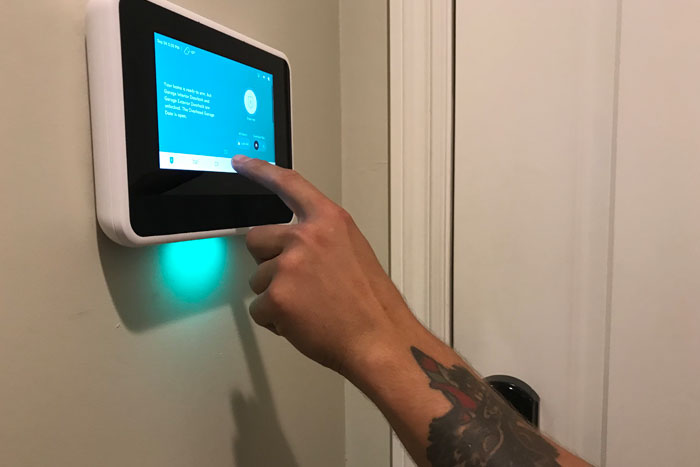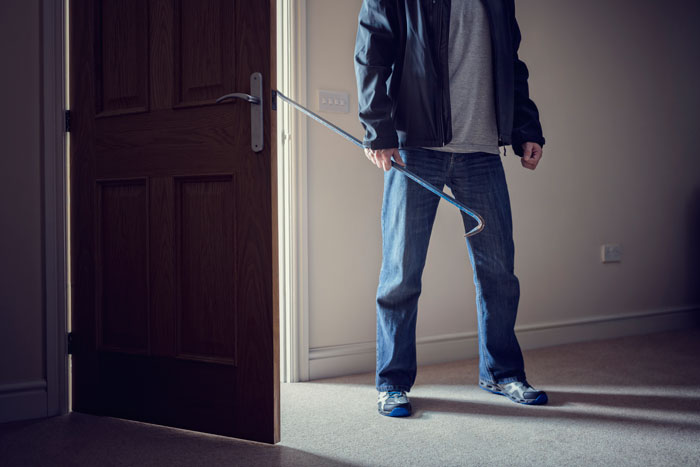
How to Handle a Public Intoxication Charge
Most people assume that as long as they don’t drive after they’ve been drinking, they have nothing to worry about. What they don’t realize is that in California, you can be charged with public intoxication.
While it’s perfectly okay to drink in California, while you’re in public, you’re not allowed to drink to a massive excess. In California, there are two ways your drinking could result in your being charged with public intoxication.
The first is that you can’t be so drunk, you become a danger to yourself and to others. This means that if you leave the bar with the intention of walking home, but are so drunk you’re walking into traffic, picking fights, are doing something that makes the police think you’re endangering either yourself or others, you can be arrested. Its even possible that if you pass out on your walk home and are found by the police that in addition to taking you to the hospital for an exam, they will also charge you with public intoxication.
The other thing you can do that will prompt the police to arrets you for public intoxication is obstructing public ways. If your in the middle of sidewalk, public entrance, or road and people are unable to get around you, you’ll be taken to jail.
In California, public intoxication is a misdemeanor offense. While this isn’t as serious as being accused of a felony, if you’re convicted, you will have a criminal record. It is something employers and anyone else who runs a criminal background check on you will discover. While you can plead guilty to the charges right away, in the long run, it’s usually in your best interest to consult with an attorney who will look at the details surrounding your case and help you decide what the best and least life altering course is.
If you’re convicted of public intoxication in California, the maximum sentence you receive is six months in a county jail and/or a $1,000 fine. It’s common for individuals who are convicted of public intoxication in California to be ordered to take on community service and to pay a fine. In some situations, mandatory substance abuse awareness classes are part of the sentence.

Different Ways Social Media can get you Into Legal Trouble
Social media is supposed to be a fun way to stay connected to your family and friends, and for the most part, that’s exactly what it is. However, as some people have found out, there are a few different ways that social media can cause you to get into some legal trouble.
Getting a Too Personal with a Follower
Many people make friend via social media platforms and these friendships become long lasting and healthy. The problem is that it’s easy to cross the line on social media, until what you thought was an honest attempt to get to know someone results in stalking and harassment charges.
Online social media is a massive problem. This occurs when you start to become too invested in another person’s life and start forcing yourself into their DMs, become aggressive with the comments you leave on the other person’s posts can make them uncomfortable to the point that they will file charges.
Posting About Illegal Activity
A surprising number of people inadvertently attract police attention by posting about crimes they’ve been involved in. Some simply mention that they were at the scene of a crime. Some people will post images of stolen products. There have even been cases where people were charged and convicted of crimes because they posted detailed information about the crime and their involvement on their social media case.
If you have been involved with a crime or even in activity that seems suspicious, it’s in your best interest to keep the information off of your social media platforms. You don’t want to make it easy for the police to secure an arrest warrant.
The best way to stay out of legal trouble when you’re updating your social media accounts is making sure that you take a few minutes and consider each post. Is it something that will attract the attention of the police, could violate a copyright law, or make it appear that you have a questionable personality.
Posting Images That Aren’t Yours Without the Owner’s Permission
This is one that isn’t discussed as much as it should be. While you may not seem the harm in posting a picture you either found while surfing the ‘net or a sample from a photoshoot you recently had with a photographer, doing so is actually copyright infringement. If the photo’s actual owner is upset enough, they could file charges. This has happened a few times to large companies who posted photos they didn’t actually own. In most cases, the photo’s owner approached the company and asked for compensation.

The Best Way to Smoothly Get Through a Traffic Stop
Traffic stops are always a nerve-wracking experience, especially if you’re not sure why the cop is signaling for you to pull over. The good news is that there are some things you can do to make the entire process go more smoothly.
Don’t Try to Run
Many of us have a strange urge to try to run and evade the police, even when we know we haven’t done anything massively wrong. You need to ignore the urge. Not only will you put yourself in a position where you could cause an accident, but you will also get an even heftier ticket and possibly be charged with a misdemeanor. It’s in your best interest to take a deep breath and resign yourself to the fact that you’re getting pulled over.
Stay Calm
Getting upset isn’t going to help the situation but staying calm will. The calmer you are as the officer approaches your car, the smoother the traffic stop will go. Not only will you find it easier to understand what the officer is asking you when you’re calm, but you’re also less likely to do or say something that will irritate the officer. Calm drivers are far more likely to be let off with a warning than drivers who are upset and belligerent.
Find a Safe Place to Pull Over
Yes, you want to pull over shortly after the police signal you to stop, but you have the right to do so in a safe place. If possible, pull over into a parking lot or look for a place with a wide shoulder.
Don’t Argue With the Officer
If the officer writes a ticket, but you don’t think you’ve done anything wrong, don’t start arguing with the officer. It’s unlikely that the argument will do anything but make the situation worse. If you don’t think the ticket is fair, accept it when the officer hands it to you. Once you’re home, you can arrange to argue your case in front of a judge.
Don’t Over Share
When it comes to talking to the officer, you want to speak as little as possible. Yes, you want to be polite. Yes, you should answer their questions honestly. What you don’t want to do is inadvertently say something that could get you into more trouble. If you have passengers, they should remain quiet unless the officer asks them a direct question.
If you follow these tips, the next time you’re pulled over should be a smooth process.

Illegally Using a Handicap Placard in California
It’s so frustrating to drive all around a parking lot and not find any empty places to put your car other than a handful of spaces that are reserved for handicapped parking. All of us are tempted to slide into one of those spaces, especially when we only need the spot for a short time, at one point or another. The reason we don’t is because there is a heft ticket attached to doing so.
While the ticket for parking in a sport that has been set aside for handicapped parking is all it takes for most of us to keep looking for a space at the back of the lot, some people look for a different way to use the prime parking spaces. They create/steal/borrow a placard and use it whenever they want to park close to the building. Few realize just how much trouble they’ll get into for the action. If you’re caught, you could go to jail.
The law that deals with the misuse of a handicapped disability parking placard is California’s vehicle code 4461 VC.
The law does an extremely good job of making it clear that anyone who hasn’t been issued a disabled parking placard is not allowed to use it. When you read through the law, you’ll learn that you:
- Aren’t allowed to lend the placard to another driver with the knowledge that they’ll use it to park
- Allow someone else to use the placard when you’re not also in the vehicle and planning on going into the building
- Aren’t allowed to display a placard that has expired or been revoked
- Use a placard that was issued to someone else
- Create a forged placard
Most people who get into trouble for using a handicapped parking placard when they aren’t supposed to assume that they will be given a ticket and a hefty fine. They’re partly correct. What many don’t realize is that the illegal use of a disability placard is actually fraud and is against the law. Instead of getting a relatively simple citation, you’ll actually be charged with a misdemeanor. If you’re convicted, you could be sentenced to some jail time.
The reality is that most people who are convicted of the illegal use of a disability placard aren’t sent to jail. Some are required to do some community service and pay a fine. What catches some people off guard is how large a fine they will have to pay. The maximum fine for the illegal use of a handicapped parking placard is $1,000. If the judge does decide to include some jail time into your sentence, you could be ordered to spend as much as six months in a county jail.

How to Protect Yourself from a Break-In in California
The first thing you need to do is make sure you’re in the habit of really locking up your home, both while you’re away and while in residence. This doesn’t just mean bolting the front door. Go through your house and make sure all the doors that lead to the exterior are locked. Next, do the same with your windows. This is also an excellent opportunity to check the quality of your locks. Make sure that they are in good repair and that they actually keep the door and window locked.
Don’t Be Ostentatious
Don’t make your home look like an appealing risk to robbers. This means you shouldn’t leave your expensive toys lying in the driveway. You also shouldn’t brag about all the valuables you have in your home. Living a quiet life and keeping all of your treasures tucked away might not seem like fun, but it will keep you and your personal property safe.
Be Smart with Your Spare Key
The best thing you can do to keep your home safe is to fit your door with a keypad and routinely change the code, but if you still use a key to open your doors, don’t leave a spare key tucked in a flowerpot or under your welcome mat. In fact, don’t leave the key anywhere outside where it could be found by a would-be thief. Keep your key on your person or tucked in a safe place in your car.
Burglar Proof Your Front Yard
Burglars are attracted to homes that provide a great deal of natural coverage or places where they can hide whenever someone drives past. Removing hedges, shrubs, sheds, and trees that are near your home will deter them. You should also set up a few motion-activated spotlights, yes, any passing wildlife will activate the lights, but they will also cause a burglar to look for a different place to rob.
The best way to make sure your home remains safe, especially while you are away, is to be discreet about what you share on social media. Don’t talk about your vacations and other trips until after you’re home. The last thing you want is to broadcast the fact that your home is unprotected.

What You Need To Know About Property Crimes in California
While the term property crimes gets tossed around by the media, in California, you aren’t going to be charged with a “property crime.” The reason for this is because, in California, the phrase property crime is actually a blanket term that’s used to describe multiple crimes.
The four most common property crimes in California are:
- Arson
- Theft
- Burglary
- Vandalism
If the media says that you have been charged with one or more property crimes, it means you’ve been charged with one or more of these offenses.
Arson is pretty self-explanatory. Arson happens when you deliberately set fire to a property. In California, arson is always a felony. If you’re convicted, you will spend anywhere from 16 months to nine years in prison. One of the big factors that determines how long you’re incarcerated includes if you set fire to your own personal property, if the burned structure was inhabited, and if anyone suffered a serious injury as a result of the fire.
One of the interesting things about arson is that it’s the only property crime you can be charged with, even when the property is your own.
There are multiple types of theft charges in California. For a theft to be considered a property crime, it had to have been committed on someone else’s property. Examples of theft that fall into the category of property crime include:
- Shoplifting
- Grand theft auto
- Robbery
- Embezzlement
- Package theft
Whether your charges are for misdemeanor theft or felony theft depends on the collective value of what was stolen. If the property was less than $900, you’d only face misdemeanor theft charges. If it exceeded $900, you’d be charged with a felony.
Most people not only think of burglary as a property crime but also as a violent crime. To be charged with burglary in California, not only do you have to break into someone’s property (house, barn, shed, storage unit), but you have to do so for the purpose of stealing something. If you’re convicted of second-degree or first-degree burglary in California, you’ll face up to 20 years in a California state prison.
Vandalism, while serious, is often considered the most minor of California’s property crimes. Vandalism is simply the destruction of someone else’s property. To be convicted of vandalism in California, you had to intentionally create the damage and knew the property wasn’t yours. The degree of punishment connected to vandalism in California depends on how much damage was caused. Restitution is often part of the sentence.

Understanding How Bail Works With Absolute Bail Bonds
We understand how bail can be a stressful and confusing situation. Let us reduce your stress as our professional and fully licensed bail bondsmen walk you through the bail bond process, answering all your questions.
The bail bond process is quite simple. Of course, there is going to be its share of legal print, but overall, it’s very understandable.
Question: What is a bail bond for?
Answer: A bail bond is a written promise that the defendant will pay a fixed amount of money for his or her release from jail. The fixed amount will be 10% of the full bail amount.
Question: Does the full fixed amount need to be paid upfront before the defendant can be released?
Answer: No. The bail bond company will calculate a workable payment plan the defendant will be released from jail and following that, payments on the bail bond will continue to be made.
Question: What are the contingencies?
Answer: The defendant is required to show up for all court dates. If the court has additional mandates, like attending counseling, staying away from someone, or someplace, and not leaving the state, for example, the defendant will need to abide by these as well.
Question: What if they don’t?
Answer: The bail bond will be revoked, and the defendant will be taken back into custody. In addition, the full bail amount may need to be paid off.
Question: Is the money refundable at the end of the trial, if my loved one obeyed all his or her orders?
Answer: No. Think of the fixed price for the bail bond as a fee for the bail bond services. But, most people use bail bonds to bail out of jail because, in the long-term view, it is more affordable for them.

What is Sober Living in California? How Does It Work?
When most people hear the term sober living, they assume that it refers to a person who has decided to completely abstain from alcohol and drugs.
The truth is that sober living is actually a program that’s designed to help addicts start the long road to recovery.
Sober living in California involves an addict moving into a facility where they will not only be able to avoid temptation but will also be provided with the tools needed to rebuild their lives and learn how to live without drugs/alcohol. In the past, many of the facilities that currently identify as sober living facilities were called halfway houses.
Most of the residents at sober living facilities are individuals who have been recently released from jail for drug charges. Many have just completed a lengthy sentence. The idea behind sending them to a sober living facility is that it provides them with a place to stay and the resources needed to ease their transition back into reality. While many of the people enrolled in one of California’s sober living facilities have been recently released from jail, some are individuals who don’t necessarily have a criminal record but were actually residents of a long-term rehab program who want to reenter life outside of rehab at a slower pace.
The great thing about sober living facilities in California is that they do more than provide residents with a place to stay. They are no longer run like mini-jails that some halfway houses became. While the residents do have rules they have to follow while they are residing at the sober living facility, they also have access to tools and resources that would have been difficult for them to find had they simply returned to their homes.
One of the things sober living residents learn is how to embrace a sober lifestyle and resist the temptation to give into their addiction once they are reunited with their loved ones. This education can include recognizing which people aid in their addiction. What habits triggered their addiction. How to replace illegal substances with healthier, less addictive options.
Each sober living facility has different rules, policies, and approaches to helping the residents establish the foundation for a sober future, but most have a few common rules, which include:
- Zero-tolerance for addictive substances
- Frequent alcohol and drug tests
- Mandatory chores
- Curfews
- Employment requirements
- Mandatory attendance at sobriety support groups and rehabilitation programs
While each person’s experiences are different, many of the people who have gone through one of California’s sober living programs credit the program with giving them the confidence and tools needed to enjoy a sober lifestyle even after they’ve graduated from the sober living program.

Teen Marijuana Use in California
Recreational marijuana is legal in California. However, that doesn’t mean that teens are allowed to partake in marijuana.
At this point, it’s legal for anyone who is over the age of 21, to grow, use, and carry marijuana. That age limit is important. If a person is 21 and enjoying some marijuana, they’re fine. The same isn’t true if their 19-year-old friend is doing the same thing.
The one exception to marijuana use in teenagers is if that medical marijuana can be prescribed to anyone who is at least 18 years old. That means that if an 18-, 19-, or 20-year-old has a prescription from a legit doctor, they can legally use marijuana. If a teen is prescribed medical marijuana, they must adhere to the rules laid out in the prescription. The slightest deviation could result in them facing serious legal repercussions.
Teens who are caught illegally in the possession of marijuana will face the same legal consequences they’d face if they were caught with alcohol. As long as the teen is merely in the possession of the marijuana but not using it, they will be charged with an infraction. The consequences of this particular marijuana infraction include a fine, mandatory drug education, and community service.
Teens who are caught operating a car after they have been illegally using marijuana will face the same consequences that they would had they been illegally drinking. In addition to fines and drug counseling, they will face license suspension. The more times they are caught driving while under the influence of marijuana, the more severe the legal consequences become.
At the end of the day, it’s important to make sure teenagers understand that it’s really in their best interest to wait until they are 21 before they experiment with marijuana. While they still have to be careful and make sure they don’t take so much that their ability to drive is impaired, by waiting until they’re legally able to do so, they don’t have to worry about getting into trouble for simply having marijuana in their pockets or tucked into a purse.


